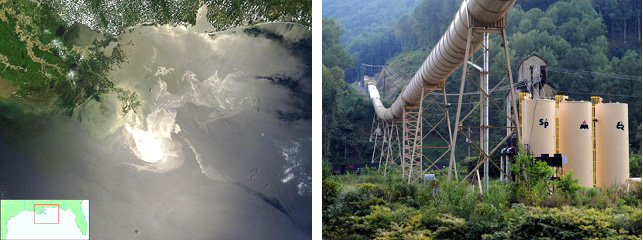While the economics of climate change get much attention, the ethical considerations of climate change often get short shrift by comparison.
One of the challenges of applying traditional economics and cost benefit analysis to the problem of climate change is that the costs and benefits are simply not borne by the same individuals. There is a disaggregation of the costs and benefits with respect to both generation and region. We have seen that those who live in the undeveloped and developing world, largely in the tropics, and have had little role in the carbon emissions that have led to climate changes thus far, are likely to see the most devastating impacts in key areas such as agriculture and freshwater availability and—in the case of low-lying island nations—loss of habitability. Because of their relative lack of wealth, the nations of the undeveloped and developing world are the least able to implement adaptations that might better allow them to cope with climate change. One possible solution is a system that would provide for a transfer of funds from industrial nations to poorer nations to allow them to implement adaptive measures.
Aside from the regional disparities, there is a fundamental generational disparity associated with climate change. The generation that is creating the problem—us—is unlikely to see the most severe impacts of climate change. Instead, it is future generations who will see the greatest impacts of the carbon we are emitting today, e.g., inundation due to sea level rise, stronger hurricanes, worsened drought. The economic discounting typically used in purely economic evaluations of the climate change problem, one might argue, does a grave injustice to future generations by placing lesser value on their world than ours.
There is, finally, the even more fundamental ethical question of whether it is ethical to be playing "Russian roulette" with the future of the planet. We have discussed the potential harm to the climate associated with ongoing carbon emissions. But there are other even more immediate and more visceral reminders of the hidden costs—the externalities—of our current reliance on fossil fuel sources that are increasingly more difficult, and more dangerous, to recover. Recent accidents over the past decade, like the Deepwater Horizons oil disaster, which cost human lives and did potentially irreparable harm to the ecosystems of the Gulf of Mexico, or the Upper Big Ranch Coal Mine explosion and collapse, which killed 25 miners (the company, Massey Energy, that runs the mine had been cited for over 500 violations in the past year; this is the same company responsible for the extremely controversial practice of mountain top removal) are reminders of the true cost of our continuing reliance on fossil fuel energy.

The recent Japanese nuclear meltdowns, resulting from a major earthquake off the coast of Japan and devastating tsunami, serve as further warnings regarding the dangers of some other non-carbon energy sources that have been proposed as alternatives to fossil fuel energies. One can make a fairly compelling argument that there are no magic bullets. The only safe way of meeting our current and future energy requirements is to put far greater investment into clean, renewable energy sources—like wind, solar, hydropower, biofuels, etc.
We have talked previously about the so-called precautionary principle. There is only one Earth, and if we choose to perform an uncontrolled experiment with it, and that experiment goes awry--there is no going back. There is no restoring the Greenland and Antarctic Ice Sheets, which took millions of years to form, once they have collapsed. There is no restoring species, who evolved over many millions of years, once they go extinct because of human-caused environmental changes. Naive economic analyses of climate change damages can be surprisingly dismissive of the costs of such catastrophic outcomes. Critics have pointed out, for example, that one widely used economic model for performing carbon emissions cost-benefit analysis places a disturbingly low cost on ecosystem damages: the model favors the elimination of 99% of species going extinct within 40 years because it only values the net loss of those species at $250/capita! (the costs of lost species are valuated only in terms of the fact that humans like having them around, i.e., there is no intrinsic value ascribed to animal and plant species, functioning ecosystems, etc.—arguably a fundamental weakness in the way such damages are treated in these sorts of models in general).
Is this outcome defensible from a moral or ethical point of view? Could we rationalize leaving our children and our grandchildren not only a severely degraded environment, but a world lacking most of the wonder and beauty of our world —charismatic creatures like the polar bear and the now-extinct Golden Toad, and Hemingway's magnificent "Snows of Kilimanjaro"?

Scientists are partnering with communities and evaluating the current best solutions for climate at Project Drawdown. Many of the adaptation, mitigation, and reduction strategies discussed in this course are evaluated there to create a database of the best ideas for "drawing down" carbon in the atmosphere. You can read more about the project here, and quiz your knowledge about the best solutions here.
And, with that thought, we have come to the end of the course.
